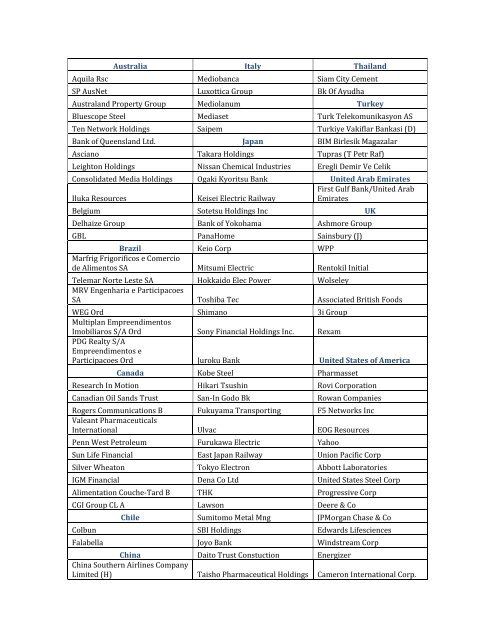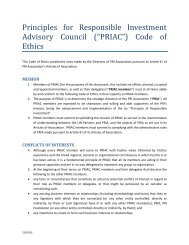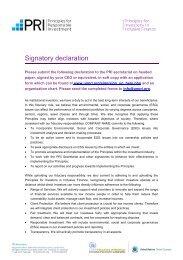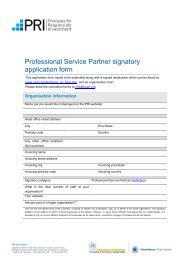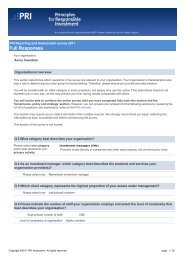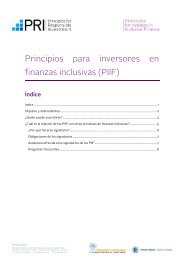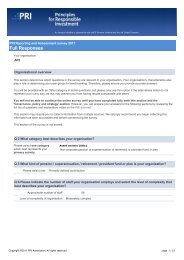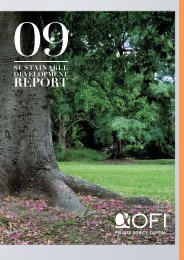Australia Italy Thailand Aquila Rsc Mediobanca Siam City Cement ...
Australia Italy Thailand Aquila Rsc Mediobanca Siam City Cement ...
Australia Italy Thailand Aquila Rsc Mediobanca Siam City Cement ...
- No tags were found...
Create successful ePaper yourself
Turn your PDF publications into a flip-book with our unique Google optimized e-Paper software.
Technical guidance: Bedhead servicesThe ‘patient experience’ is, for instance,frequently mentioned.Although central staff bases are stillconsidered essential in somedepartments, ‘touchdown nurse bases’are now commonly used on new builds.The functionality of these is covered insome detail in respect of how bedheadservices, and in particular nurse call,interact at these locations.‘Old favourites’ are still prevalent inHTM 08-03. For instance, the tried andtrusted ‘follow the light’ principle forguiding staff to patients requiringassistance has been in use throughout theUK and elsewhere in the world since themid-1960s, and is well recognised andunderstood. Also recognised as acceptedpractice for many years, a ‘pull on-pushoff red switch’ for emergency use isdescribed as the typical arrangement forwhen staff assistance is urgently required.‘System resilience’ is also mentioned anumber of times. Although not formallyclassified as a medical device, thisequipment, and these systems, are reliedupon in critical situations.Management and operationalconsiderationsChapters 3, 4, and 5 of HTM 08-03 explainsome overriding principles – for examplethat management responsibilities areextended ‘to ensure that patients and staffare provided with an appropriate quantityand quality of bedhead services’, andthat they are ‘reassessed periodically bymanagement to ensure that they remainadequate for the purpose intended andperform satisfactorily’. Operational policyshould ensure that bedhead services are‘regularly tested and maintained inaccordance with the manufacturer’srecommendations’.It is in these sections that the potentialfor linking of mobile communications,including two-way speech communicationvia mobile telephony, is introduced. This isdeveloped further in the document underchapters focussing specifically on nursecall aspects of bedhead services.Design considerationsIn many parts of the document, referenceis made to design and ‘clinical flexibility’,where the Memorandum urges particularconsideration for varying clinicalpractices, and the need for bedheadservices to operate reliably and safely inservice. Flexibility relates to the need tobe able to easily carry out upgrading andmodification of systems and servicesbased on the changing demands of thefacility.The need for client teams to considercontrol of infection is now well establishedas a key issue. HTM 08-03 deals with thisspecifically in section 5.5. and there aremany other references throughout thedocument. Manufacturers have aFunctions associated with nurse call and other alarm systems have coloursand indication patterns prescribed to represent different functions. For example,cardiac is always blue.responsibility to recognise control ofinfection issues in the design andoperation of their equipment for thebedside environment. This is an areawhere one would expect suppliers to havesought specialist advice, and to be able todemonstrate that they have a clearunderstanding of the issues.‘Suitable and fit-for-purpose’The document reminds readers toconsider the wide range of patient caretypes, i.e. elderly care, children’s, adultacute etc. It is also quite reasonable toexpect that the systems provided willdiffer, dependant on ward layout andnursing practice. Manufacturers have aresponsibility to ensure that the systemsthey are proposing are suitable and fit-forpurposefor the given application.Handset buttons are clearly marked,with an easily distinguishable nursecall button, which should bepermanently illuminated.Alongside this, and with today’s evergrowingrange of clinical demandsleading to an increase in medical anddiagnostic equipment at the patientbedside a key consideration is to makesure that, wherever possible, bedheadservices are compact, and integrated(see 5.25). They should be ‘ergonomicallyefficient, providing good accessibility toboth patients and clinical staff’.Consistent positioningIn particular, the layout and configurationof services at the bedside, and the needfor consistency in the positioning of keyfunctions and facilities, is referred to.For example, staff emergency pull-pushswitches should be in the same place ateach bed position, and not obscured byequipment and furniture.Although the document is lessprescriptive than previous guidance,standardisation of approaches to designand installation of bedhead services isgiven some importance in Chapter 5.To help this aspect, particular functionsassociated with nurse call and other alarmsystems have colours and indicationpatterns prescribed to represent differentfunctions. For example, patient – nursecall switches are orange, emergencystaff call switches are red, and cardiac callswitches, blue. (The recommended alarmpatterns and colours can be found withinthis chapter in tables 1 and 2 on page 12of the document).Bedhead servicesChapter 6 of HTM 08-03 covers therequirements for bedhead services, andin particular bedhead services trunking.This includes details on the bedheadarrangement and lighting options. Thereare references to the need to be compliantHealth Estate JournalJanuary 201347
India Singapore Alpha Natural ResourcesGlenmark Pharmaceuticals Hotel Properties Amgen CorpJSW Energy Ltd.Singapore TechnologiesEngineeringPPG IndustriesNestle IndiaYangzijiang ShipbuildingHoldingsHCPBharti Airtel Sweden NetAppAshok Leyland Modern Times Group Time WarnerRanbaxy Laboratories Husqvarna AB B Air Products And ChemcomIndonesia Industrivarden AB Ser A Micron TechnologyBank Central Asia Elekta B RaytheonTambang Batubara Bukit Asam Switzerland PraxairAstra Agro LestariIsraelOrmat IndustriesJerusalem EconomyAVNER OIL EXPLSwiss Prime SiteAryztaNobel Biocare HoldingSynthes


